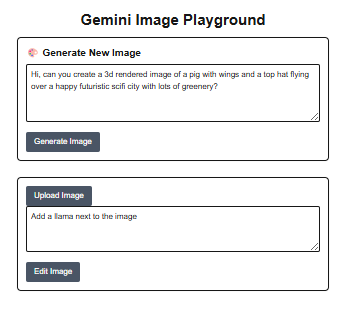From GenAI Demos to Production: Why Structured Workflows Are Essential
At technology conferences worldwide and on social media, generative AI applications demonstrate impressive capabilities: composing marketing emails, creating data visualizations, or writing functioning code. Yet behind these polished demonstrations lies a stark reality. What works in controlled environments often fails when confronted with the demands of production systems. Industry surveys reveal the scale of this […] The post From GenAI Demos to Production: Why Structured Workflows Are Essential appeared first on MarkTechPost.

At technology conferences worldwide and on social media, generative AI applications demonstrate impressive capabilities: composing marketing emails, creating data visualizations, or writing functioning code. Yet behind these polished demonstrations lies a stark reality. What works in controlled environments often fails when confronted with the demands of production systems.
Industry surveys reveal the scale of this challenge: 68% of organizations have moved 30% or fewer of their generative AI experiments into production, while only 53% of AI projects overall progress from prototype to production – with a mere 10% achieving measurable ROI (Wallaroo). Why does this gap persist? The controlled environment of a demonstration bears little resemblance to the unpredictable demands of real-world deployment.
Most current GenAI applications rely on what some have called ‘vibes-based’ assessments rather than rigorous validation. A developer reviews the output, determines it looks reasonable, and the system advances to the next stage of development. While this approach might sometimes identify obvious flaws, it fails to detect subtle inconsistencies that emerge only at scale or with edge-case inputs.
These reliability concerns become critical when AI systems influence business decisions with tangible consequences. 70% of organizations estimate needing at least 12 months to resolve challenges in achieving expected ROI from GenAI, highlighting the high stakes of production failures. Each misstep carries measurable costs: an incorrect product recommendation affects not just immediate sales but customer retention; an inaccurate financial summary might lead to misallocation of resources; a flawed legal interpretation could create significant liability exposure.
The transition from promising demonstrations to dependable production systems requires more than incremental improvements. It demands a fundamental shift in how we architect and evaluate GenAI applications. Structured workflows and systematic evaluation offer a methodical path forward—one that transforms unpredictable prototypes into systems worthy of trust with consequential decisions.
The Limitations of Monolithic GenAI Applications
Most first-generation GenAI applications employ a deceptively simple architecture: user input enters the system, a language model processes it with some contextual information, and the system produces a response. This end-to-end approach, while straightforward to implement, introduces significant limitations when deployed beyond controlled environments.
The most pressing challenge involves identifying the source of errors. When a monolithic system produces incorrect, biased, or nonsensical output, determining the cause becomes an exercise in speculation. Did the retrieval mechanism provide irrelevant context? Was the prompt construction flawed? Does the base model lack necessary capabilities? Without visibility into these components, improvement efforts resemble guesswork rather than engineering. Choco, a food distribution platform, discovered this when their single “catch-all” prompt worked in a hackathon but proved “not scalable or maintainable” in production.
Language models introduce another complication through their probabilistic nature. Even with identical inputs, these models may generate different outputs across successive executions. This variability creates a fundamental tension: creative applications benefit from diverse outputs, but business processes require consistency. The legal field saw an infamous example when an attorney unknowingly submitted hallucinated court cases from ChatGPT, leading to sanctions. The lack of internal measurement points further hampers improvement efforts. Without defined evaluation boundaries, teams struggle to isolate performance issues or quantify improvements.
Many current frameworks exacerbate these problems through premature abstraction. They encapsulate functionality behind interfaces that obscure necessary details, creating convenience at the expense of visibility and control. A team at Prosus found that off-the-shelf agent frameworks were fine for prototyping but too inflexible for production at scale.
These limitations become most apparent as organizations scale from prototype to production. Approaches that function adequately in limited tests falter when confronted with the volume, variety, and velocity of real-world data. Production deployment requires architectures that support not just initial development but ongoing operation, monitoring, and improvement—needs that monolithic systems struggle to satisfy. Successful teams have responded by breaking monolithic designs into modular pipelines, taming randomness with deterministic components, building comprehensive evaluation infrastructure, and favoring transparent architectures over premature abstractions.
Component-Driven GenAI: Breaking Down the Black Box
The transition to component-driven architecture represents more than a technical preference—it applies fundamental software engineering principles to generative AI development. By decomposing monolithic systems into discrete functional units, this approach transforms opaque black boxes into transparent, manageable workflows.
Component-based architecture divides complex systems into units with specific responsibilities, connected through well-defined interfaces. In GenAI applications, these components might include:
- Data Retrieval Component: A vector database with embedding search that finds relevant documents or knowledge snippets based on user queries (e.g., Pinecone or Weaviate storing product information).
- Prompt Construction Component: A template engine that formats retrieved information and user input into optimized prompts (e.g., a system that assembles query context).
- Model Interaction Component: An API wrapper that handles communication with language models, manages retries, and standardizes input/output formats (e.g., a service that routes requests to Azure OpenAI or local Ollama endpoints).
- Output Validation Component: A rule-based or LLM-based validator that checks outputs for accuracy, harmful content, or hallucinations (e.g., a fact-checking module that compares generated statements with retrieved knowledge).
- Response Processing Component: A formatter that restructures raw model output into application-appropriate formats (e.g., a JSON parser that extracts structured data from text responses).
Each component addresses a specific function, creating natural boundaries for both execution and evaluation.
This decomposition yields several practical advantages that directly address the limitations of monolithic approaches. First, it establishes separation of concerns, allowing developers to focus on specific functionality without addressing the entire system simultaneously. Second, it creates discrete evaluation points where inputs and outputs can be validated against defined criteria. Third, it simplifies reasoning about system behavior by reducing complex interactions to manageable units that can be understood and modified independently.
Leading organizations have demonstrated these benefits in production. Uber’s DragonCrawl, a system for automated mobile app testing, uses LLMs to execute tests with human-like intuition. While not explicitly described as component-driven in Uber’s blog, its architecture effectively separates concerns into functional areas working together:
- A representation component that converts app UI screens into text for the model to process
- A decision-making component using a fine-tuned MPNet model (110M parameters) that determines what actions to take based on context and goals
- An execution component that implements these decisions as interactions with the app
This structured approach achieved “99%+ stability” in November-December 2023 and successfully executed end-to-end trips in 85 out of 89 top cities without any city-specific tweaks. Most importantly, the system required no maintenance—when app changes occurred, DragonCrawl figured out how to navigate new flows on its own, unlike traditional tests that required hundreds of maintenance hours in 2023. The deliberate model selection process (evaluating multiple options against precision metrics) further demonstrates how systematic evaluation leads to reliable production systems.
Well-designed interfaces between components further enhance system maintainability. By establishing explicit contracts for data exchange, these interfaces create natural boundaries for testing and make components interchangeable. For example, a data retrieval component might specify that it accepts natural language queries and returns relevant document chunks with source metadata and relevance scores. This clear contract allows teams to swap between different retrieval implementations (keyword-based, embedding-based, or hybrid) without changing downstream components as long as the interface remains consistent.
The Component-Evaluation Pair: A Fundamental Pattern
At the heart of reliable GenAI systems lies a simple but powerful pattern: each component should have a corresponding evaluation mechanism that verifies its behavior. This component-evaluation pair creates a foundation for both initial validation and ongoing quality assurance.
This approach parallels unit testing in software engineering but extends beyond simple pass/fail validation. Component evaluations should verify basic functionality, identify performance boundaries, detect drift from expected behavior, and provide diagnostic information when issues arise. These evaluations serve as both quality gates during development and monitoring tools during operation.
Real-world implementations demonstrate this pattern’s effectiveness. Aimpoint Digital built a travel itinerary generator with separate evaluations for its retrieval component (measuring relevance of fetched results) and generation component (using an LLM-as-judge to grade output quality). This allowed them to quickly identify whether issues stemmed from poor information retrieval or flawed generation.
Payment processing company Stripe implemented a component-evaluation pair for their customer support AI by tracking “match rate” – how often the LLM’s suggested responses aligned with human agent final answers. This simple metric served as both quality gate and production monitor for their generation component.
The one-to-one relationship between components and evaluations enables targeted improvement when issues emerge. Rather than making broad changes to address vague performance concerns, teams can identify specific components that require attention. This precision reduces both development effort and the risk of unintended consequences from system-wide modifications.
The metrics from component evaluations form a comprehensive dashboard of system health. Engineers can monitor these indicators to identify performance degradation before it affects end users—a significant advantage over systems where problems become apparent only after they impact customers. This proactive approach supports maintenance activities and helps prevent production incidents.
When implemented systematically, component evaluations build confidence in system composition. If each component demonstrates acceptable performance against defined metrics, engineers can combine them with greater assurance that the resulting system will behave as expected. This compositional reliability becomes particularly important as systems grow in complexity.
Eval-First Development: Starting With Measurement
Conventional development processes often treat evaluation as an afterthought—something to be addressed after implementation is complete. Eval-first development inverts this sequence, establishing evaluation criteria before building components. This approach ensures that success metrics guide development from the outset rather than being retrofitted to match existing behavior.
The eval-first methodology creates a multi-tiered framework that operates at increasing levels of abstraction:
- At the component level, evaluations function like unit tests in software development. These assessments verify that individual functional units perform their specific tasks correctly under various conditions. A retrieval component might be evaluated on the relevance of returned information across different query types, while a summarization component could be assessed on factual consistency between source text and generated summaries. These targeted evaluations provide immediate feedback during development and ongoing monitoring in production.
- Step-level evaluations examine how components interact in sequence, similar to integration testing in software development. These assessments verify that outputs from one component serve as appropriate inputs for subsequent components and that the combined functionality meets intermediate requirements. For example, step-level evaluation might confirm that a classification component correctly routes queries to appropriate retrieval components, which then provide relevant context to a generation component.
- Workflow-level evaluations assess whether the entire pipeline satisfies business requirements. These system-level tests validate end-to-end performance against defined success criteria. For a customer support system, workflow evaluation might measure resolution rate, customer satisfaction, escalation frequency, and handling time. These metrics connect technical implementation to business outcomes, providing a framework for prioritizing improvements.
This layered approach offers significant advantages over end-to-end evaluation alone. First, it provides a comprehensive view of system performance, identifying issues at multiple levels of granularity. Second, it establishes traceability between business metrics and component behavior, connecting technical performance to business outcomes. Third, it supports incremental improvement by highlighting specific areas that require attention.
Organizations that implement eval-first development often discover requirements and constraints earlier in the development process. By defining how components will be evaluated before implementation begins, teams identify potential issues when they’re least expensive to address. This proactive approach reduces both development costs and time-to-market for reliable systems.
Implementing Component-Based GenAI Workflows
Practical implementation of component-based GenAI workflows requires methodical decomposition of applications into steps that can be evaluated. This process begins with identifying core functions, then establishing clear responsibilities and interfaces for each component.
Effective breakdown balances granularity with practicality. Each component should have a single responsibility without creating excessive interaction overhead. Uber’s GenAI Gateway demonstrates this through a unified service layer handling 60+ LLM use cases. By mirroring OpenAI’s API interface, they created standardized endpoints that separate integration logic from application business logic.
Well-designed interfaces specify both data formats and semantic requirements. Microsoft’s Azure Copilot uses RESTful APIs between components like its Knowledge Service (document chunking) and LLM processors. This enables independent development while ensuring components exchange properly structured, semantically valid data.
Components and evaluations should be versioned together for traceable evolution. Uber’s approach allows centralized model upgrades – adding GPT-4V required only gateway adjustments rather than client changes. This containment of version impacts prevents system-wide disruptions.
Agentic components require constrained decision boundaries. Microsoft implements extensible plugins where each Azure service team builds domain-specific “chat handlers.” These predefined operations maintain control while enabling specialized functionality.
Sophisticated fallback mechanisms become possible with component isolation. Uber’s gateway implements automated model fallbacks, switching to internal models when external providers fail. This graceful degradation maintains service continuity without compromising entire workflows.
Microsoft’s golden dataset approach provides versioned benchmarking against 500+ validated question/answer pairs. Component updates are tested against this dataset before deployment, creating a closed feedback loop between evaluation and improvement.
Key challenges persist:
- Initial Investment – Designing interfaces and evaluation frameworks requires upfront resources
- Skill Gaps – Teams need both software engineering and AI expertise
- Coordination Overhead – Inter-component communication adds complexity
Organizations must balance these against the benefits of maintainability and incremental improvement. As demonstrated by Uber’s gateway – now handling authentication, PII redaction, and monitoring across all LLM interactions – centralized components with clear contracts enable scalability while maintaining governance.
Practical Considerations
Implementing component-based GenAI workflows involves several practical considerations that influence their effectiveness in production environments.
Parcha discovered users preferred reliable “agent-on-rails” designs over fully autonomous systems after their initial agent approach proved too unpredictable. RealChar implemented a deterministic event-driven pipeline for AI phone calls, achieving low latency through fixed processing cycles rather than free-form agent architectures.
The organizational implications of component-based architecture extend beyond technical considerations. PagerDuty formed a centralized LLM service team that enabled four new AI features in two months by standardizing infrastructure across product teams. This mirrors how companies established dedicated data platform teams during earlier tech waves.
Organizations with established machine learning infrastructure have a significant advantage when implementing component-based GenAI systems. Many foundational MLOps capabilities transfer directly to LLMOps with minimal adaptation. For example, existing model registry systems can be extended to track LLM versions and their performance metrics. Data pipeline orchestrators that manage traditional ML workflows can be repurposed to coordinate GenAI component execution. Monitoring systems already watching for ML model drift can be adapted to detect LLM performance degradation.
Leading organizations have found that reusing these battle-tested MLOps components accelerates GenAI adoption while maintaining consistent governance and operational standards. Rather than building parallel infrastructure, enterprise companies have extended their ML platforms to accommodate the unique needs of LLMs, preserving the investment in tooling while adapting to new requirements.
Resource allocation represents another practical consideration. Component-based architectures require investment in infrastructure for component orchestration, interface management, and comprehensive evaluation. These investments compete with feature development and other organizational priorities. Successful implementation requires executive support based on understanding the long-term benefits of maintainable, evaluatable systems over short-term feature delivery.
Building for the Future
Component-based, evaluated workflows provide a foundation for sustainable GenAI development that extends beyond current capabilities. This approach positions organizations to incorporate emerging technologies without wholesale system replacement.
The field of generative AI continues to evolve rapidly, with new model architectures, specialized models, and improved techniques emerging regularly. Component-based systems can integrate these advances incrementally, replacing individual components as better alternatives become available. This adaptability provides significant advantage in a rapidly evolving field, allowing organizations to benefit from technological progress without disruptive rebuilding.
The reliability advantage of evaluated components becomes increasingly important as GenAI applications address critical business functions. Organizations that implement systematic evaluation establish quantitative evidence of system performance, supporting both internal confidence and external trust. This evidence-based approach helps organizations navigate regulatory requirements, customer expectations, and internal governance. As regulatory scrutiny of AI systems increases, the ability to demonstrate systematic evaluation and quality assurance will become a competitive differentiator.
Component evaluation enables continuous, data-driven improvement by providing detailed performance insights. Rather than relying on broad assessments or anecdotal feedback, teams can analyze component-level metrics to identify specific improvement opportunities. This targeted approach supports efficient resource allocation, directing effort toward areas with measurable impact.
Organizations should assess their current GenAI implementations through the lens of componentization and systematic evaluation. This assessment might examine several questions: Are system responsibilities clearly divided into evaluable components? Do explicit interfaces exist between these components? Are evaluation metrics defined at component, step, and workflow levels? Does the architecture support incremental improvement?
The transition from impressive demonstrations to reliable production systems ultimately requires both technical architecture and organizational commitment. Component-based workflows with systematic evaluation provide the technical foundation, while organizational priorities determine whether this foundation supports sustainable development or merely adds complexity. Organizations that commit to this approach—investing in component design, interface definition, and comprehensive evaluation—position themselves to deliver not just impressive demonstrations but dependable systems worthy of trust with consequential decisions.
The post From GenAI Demos to Production: Why Structured Workflows Are Essential appeared first on MarkTechPost.







































































